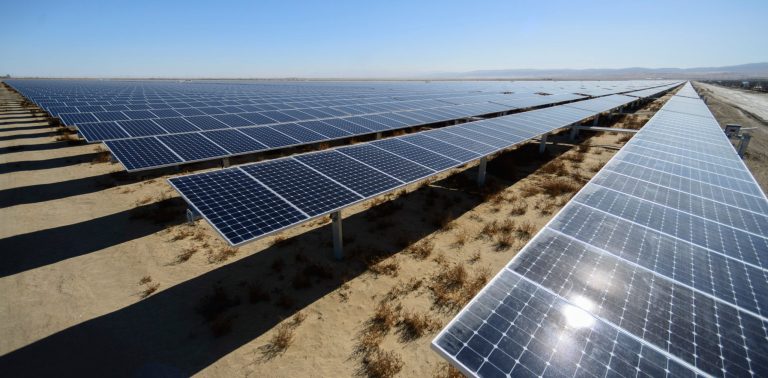Stanford will be powered entirely by solar energy by next summer, making it one of the most energy-efficient research universities in the world.
Stanford Energy System Innovations (SESI) has been working on Stanford’s transition to renewable energy for the past decade. Its original goal of going 100% solar by late 2021 was delayed by a year due to supply-chain shortages as well as a fire that destroyed a part of the first solar generating station. Currently, the University ranks within the top 10 colleges for using the most renewable energy. Stanford is also positioned “to become the first research university to use 100% renewable electricity, according to the Association for the Advancement of Sustainability in Higher Education (AASHE),” Lincoln Bleveans, the executive director of Sustainability and Energy Management at Stanford, wrote.
Stanford chose solar energy because of its cost-effectiveness and reliability relative to wind, geothermal and other clean energy sources, according to Joseph Stagner, former executive director of Sustainability and Energy Management at Stanford. “The solar grid that we ended up selecting was the most cost-effective for Stanford, and it appeared to be the one with the most chance of actually being built,” Stagner added.
The University’s early solar installations consisted of 5-megawatt rooftop solar panels in 2015 and its first solar generating station in 2016. Stanford Solar Generating Station #1, near Rosamond, Calif., produces 67 megawatts of solar-generated electricity, covering 65% of Stanford’s daytime electricity needs. Stanford signed a contract with Recurrent Energy — a company dedicated to providing clean electricity through solar panels — in 2018 to create its second solar generating station in Kings County. This addition will cover the rest of their electricity needs, according to Land, Buildings and Real Estate vice president Robert Reidy. The University’s power purchase agreement with Recurrent Energy will be in effect for the next 35 years.
Recurrent Energy proposed to add a 50-megawatt battery to store solar energy for Stanford’s night-time electricity needs. “Even though we’re not getting power from our solar at night, we are displacing carbon in the daytime, as if we were getting it at night,” Stagner said. Stanford is considering installing additional roof-top solar panels and adding more battery capacity to cover night-time electricity needs.
Solar energy has both environmental and financial benefits for the University. Nearly a third of the solar project was paid through a tax credit offered by California. With Stanford’s tax credit still in place, the University receives power for about two cents per kilowatt per hour from Stanford Solar Generating Station #2. The rate was five cents per kilowatt per hour from Stanford Solar Generating Station #1, but has become cheaper with time. The average price of solar panels has dropped 90% over the last decade, varying by location.
Stanford’s transition to solar energy has positively impacted the environment. In 2015, Stanford reduced its greenhouse gas emissions by 68%, far exceeding California’s 2006 Global Warming Solutions Act that sought to reduce greenhouse gas emissions to 1990 levels by 2020.
“By 2024, Stanford will reduce its greenhouse gas footprint by 80%, well in advance of any global, state or local goals and objectives,” Reidy wrote. According to Reidy, the last 20% is the most difficult, because it includes emergency generators that still run on diesel fuel and other maintenance aspects.
In the next decade, Stanford is projected to eliminate its greenhouse gas emissions entirely. “We work to make sure that Stanford is doing the right thing, and to lead by example in our development and use of sustainable energy practices,” Bleveans said.
SESI faced some challenges throughout the solar-transition process. The first solar generating station was partly charred by a wildfire last year, but is now being reconstructed. In addition, the Public Utilities Commission enacted a section of the public utilities code that stated a certain percentage of renewable electricity supply had to be based in contracts at least 10 years in length. Stanford had several contracts with different companies over the span of a decade, so there wasn’t a single company meeting that requirement. The University successfully proposed legislation to exempt itself from the public utility code requirements for that contracting rule.
Supply chains were also cut short due to trade issues with China caused by the COVID-19 pandemic. “Generally speaking, the financing markets and import of goods slowed down,” Recurrent Energy’s Energy Storage and Business Management director Lucas Möller ’10 said.
Despite the challenges, Stanford has maintained its plan to use solar power as a sole replacement for its energy source. “We got all of the big building blocks and legislative projects done — now the road is very clear for Stanford to continue,” Stagner said.
